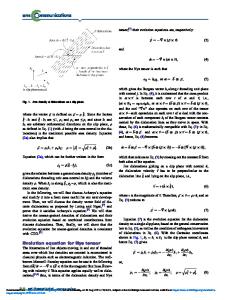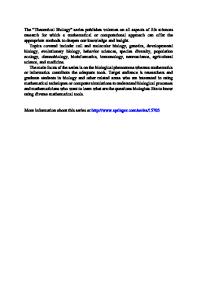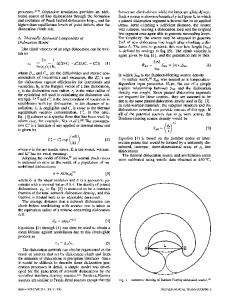Evolution of Polar and Dipolar Dislocation Density from Polychromatic Microdiffraction
- PDF / 223,934 Bytes
- 7 Pages / 612 x 792 pts (letter) Page_size
- 80 Downloads / 285 Views
Q7.8.1
Evolution of Polar and Dipolar Dislocation Density from Polychromatic Microdiffraction G.E. Ice, R.I. Barabash∗, J.W.L. Pang Oak Ridge National Laboratory, Oak Ridge TN 37831, USA ABSTRACT Polychromatic X-ray microdiffraction (PXM) is sensitive to the density and organization of the dislocations, which occurs at several structural levels. At the lowest level statistically stored (dipolar) individual dislocations can exist within a crystal. At a higher structural level dislocations can organize into strongly correlated arrangements including walls and sub-boundaries. After plastic deformation geometrically necessary (polar) dislocations as well as geometrically necessary boundaries may be formed in a crystal. These dislocations cause not only random deformation, but also strongly correlated long range rotations within the crystal, grain, or subgrain. Non homogeneous plastic deformation is observed even in single crystals at smaller scale. Polar dislocations spread the conditions for x-ray (or neutron) diffraction transverse to the reciprocal space vector of each reflection. Diffracted intensity depends on the second rank dislocation density tensor. The polar dislocations density is related to the incompatibility of the plastic deformation and to the local lattice curvature. Laue patterns are therefore sensitive to the ratio between polar and dipolar dislocations density. Different slip systems of polar dislocations population cause distinctly different streaking in Laue patterns. Examination of streaked patterns enables one to determine statistically stored (dipolar) dislocations and geometrically necessary (polar) dislocations, GNDs, and to quantitativly determine the dislocation patterning parameters. The co-evolution of the statistically stored (dipolar) and geometrically necessary dislocations (polar) may be analyzed, and the ratio between the two densities may be obtained from the analysis of the Laue spots intensity distribution. The microbeam technique is applied to analyze a dislocation structure in a Ni bicrystal under uniaxial pulling. INTRODUCTION Development of heterogeneous dislocation substructure even for single crystals is observed by a number of authors1 – 4. Any preexisting fluctuations are increasing dislocation inhomogeneity during deformation1. The dislocation structure becomes more sharply inhomogeneous as straining proceeds (even when slip is mainly homogeneous). Plastic strain gradients appear either because of the geometry of loading or because the material is plastically inhomogeneous. Density of polar dislocation population, n+, may be related to the effective strain gradient4, η. Polychromatic x-ray microdiffraction (PXM) offers a fundamentally new approach to the study of mesoscale dynamics in single crystals and polycrystalline materials5, 6. With PXM it is possible to quantitatively analyze a sample at different structure levels. In particular, it is now possible to analyze details of structure corresponding to nano (cells) - and mesoscopic (fragments) levels. Grain boundaries a
Data Loading...










